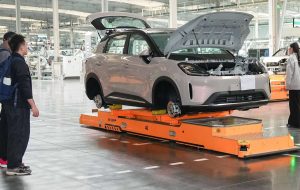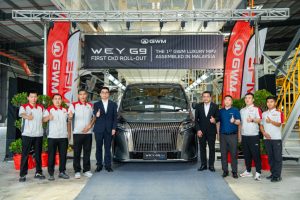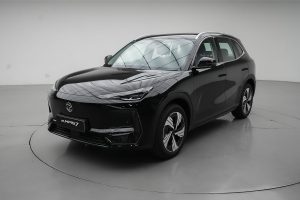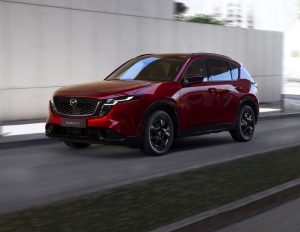IF you are lamenting the lack of new and exciting models from Nissan, you might be pleased to know that Nissan distributor Edaran Tan Chong Motor (ETCM) has kickstarted the rollout of the novel e-Power in a completely new model Kicks.
The letter “e” in this case refers to electric but unlike the battery electric vehicles (BEVs) currently in the market, Nissan’s e-Power offers a different approach to electric motoring.
It uses a 1.2-litre three-cylinder internal combustion engine (ICE) to charge the 2.1kWh lithium-ion battery that drives the Kicks e-Power sports utility vehicle (SUV).
With the e-Power system, the power roles are reversed with the battery providing electric power to propel the vehicle and the engine to charge it.
The advantage comes in the good mileage of up to 900km as the 1.2-litre engine is used only as a generator to charge the battery.
With a 41-litre fuel tank and a claimed mileage of 21.7km/l (NEDC – New European Driving Cycle) under mixed driving, there is absolutely no worry about the electric range and presents an interesting option with the impending government’s fuel subsidy cut in 2025.

The other attraction is that with Kicks e-Power, ETCM is introducing its first B-segment SUV to the Malaysian market, opening a whole new dimension to its Nissan model range.
For some reason though, we were told that Nissan doesn’t wish to classify its e-Power vehicles as hybrids.
The Kicks features a second-generation e-Power system that has 40% smaller parts leading to 30% lighter weight and better acceleration as well as a lower centre of gravity.
For a relatively small battery located midship in the Kicks, compared to BEVs, the output is pretty good at 129PS (95kW) and 280Nm.
Like a true-blue EV, it has no transmission gears as the electric motor drives the front wheels directly.
It employs an EV-type “transmission selector” knob with which you could select Drive, Neutral and Park.
There are three drive modes of Normal, Sports and Eco (economical driving that is best for urban traffic motoring).

These modes determine the flow and regeneration of electric power with Sports mode allowing strong acceleration and regeneration, which is good for winding stretches.
We found this useful during our drives on the B-road section to Melaka as we could accelerate quickly into corners and enjoy good deceleration due to the strong battery regenerating system when needed.
Unlike the all-electric Nissan LEAF we drove in 2019, the e-pedal system in the Kicks didn’t slow the SUV completely to a stop but instead, to a creeping pace of 5kph.
The e-pedal came into play when Sports and Eco modes were selected and it is said to reduce brake usage by up to 70%.
To avoid being rear-ended while using e-pedal, the system activates the brake lights when it detects a vehicle coming too close from the rear.
With the e-pedal, there was absolutely no reason to use the brakes during our winding road drives other than to come to a complete stop for some reason or other.

The media drive from Petaling Jaya to Melaka also revealed other insights into the advantages of driving the Kicks e-Power.
While it might not have the wheel-spinning standing acceleration as the BEVs with bigger and more powerful batteries, the Kicks e-Power provided reasonably strong acceleration.
Nissan says the second-generation e-Power system allows the Kicks to accelerate from 0 to 100kph in 9.5 seconds, a 5% improvement over the first-generation system.
Its moving acceleration of 100-120kph is also 7% quicker at four seconds.
In an impromptu acceleration run from the traffic lights with a Nissan X-Trail SUV, the Kicks e-Power was noticeably quicker off the line and gained initial road speed faster.
However, driving the Kicks e-Power in a robust way meant that we often heard the engine revving up, somewhat similar to driving an ICE car.
This was because when we accelerated hard, the battery was quickly drained to power the electric motor to gain road speed fast.
As it was drained, it had to be charged up and this activated the 1.2-litre engine and revving up to charge the 2.1kWh battery.

The engine was activated seamlessly with no jerks to complement the smooth driving sensation typical of an EV.
We had the option to pick 10 different displays on the 7-inch semi digital display for the drive and chose one that showed us the average fuel consumption.
The speedometer is an analogue type and we kept track of the electric power level via a bar at the bottom.
When the engine was charging the battery, a lightning sign came on and in Sports mode, it appeared quite often as the battery needed to be close to peak capacity (about 80%) for us to gain speed quickly on the move.
The Kicks e-Power carried good speeds on the highway with wind and road noise nicely contained over the various road terrain.
There is an EV mode that when selected means the engine would not operate at all while moving on electrical power for about 2km or so.

This is to allow a quiet departure from your abode without waking up the neighbourhood in the morning.
We gave that a try but the engine came to life to charge the quickly depleting battery after about 1.5km probably because we were too hard on the accelerator.
Perhaps, the EV mode would take us further if we were gentler on accelerator use as that would consume less electrical power.
We like how the blind spot warning works; instead of a light in the door mirror coming on as in most cars these days, a light on the door panel where the door mirror is attached comes on instead. It’s more practical.

As for mileage range, we covered the 230km plus distance from ETCM Petaling Jaya showroom to Melaka with plenty of fuel in the tank to spare, despite the robust driving (our average fuel consumption was more than 16km/l).
For the winding stretches, we were confident taking the Kicks e-Power through at reasonably quick speeds.
It steered well and body lean was nicely checked although we found the suspension system – an independent front with MacPherson struts and torsion beam at the rear – tuned a bit too hard, especially for secondary roads with its bumps and dips.
The Kicks e-Power we drove ran on 17-inch alloy wheels fitted with 205/55 Yokohama BluEarth E70 tyres.

As a B-segment SUV, the Kicks e-Power has good interior space for five adults; it is 4,290mm long and its wheelbase is 2,615mm.
We had some rear passenger experience on the highway and was comfortably accommodated in all aspects, mainly the legroom.
Of course, as a driver, the zero gravity inspired seats common to higher-spec Nissan models made the drive fatigue free; adjustments for the optimal driving position were, however, manually done.
There is also the intelligent rearview mirror that doubles as an liquid crystal display (LCD) screen showing images of the rear captured by a camera; we could choose either merely by adjusting the mirror accordingly.

The 423-litre luggage space is big enough for a family on holiday and if you wish to extend space for sizeable items, the 60:40 split rear seatrests would come in handy.
The Kicks e-Power, which is brought in from Thailand, is not fully considered an EV because it has an engine and does not enjoy special exemption in taxes.
ETCM has started taking orders for the B-segment SUV ahead of its official launch during the Kuala Lumpur International Motor Show in early December.
We learnt that prospective Kicks e-Power owners were told upon booking for the vehicle that the price would be around RM130,000.
There are two variants – the VL Mid Grade and VLT High Grade which is equipped with the zero gravity seats, 360-degree camera, intelligent rearview camera, intelligent cruise control, blind spot warning, cross traffic alert as well as the optional two-tone body colour.
















